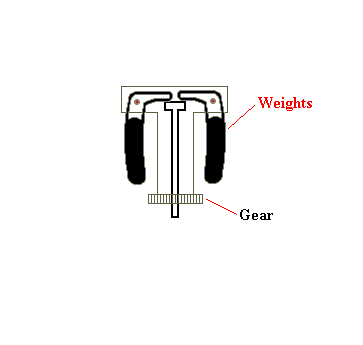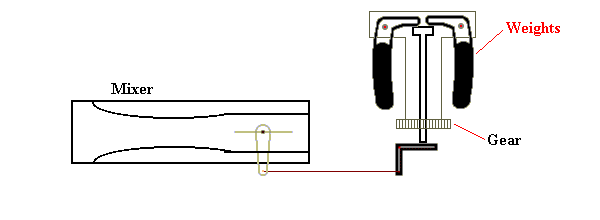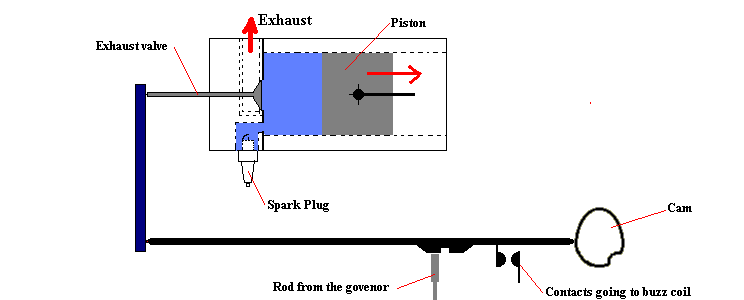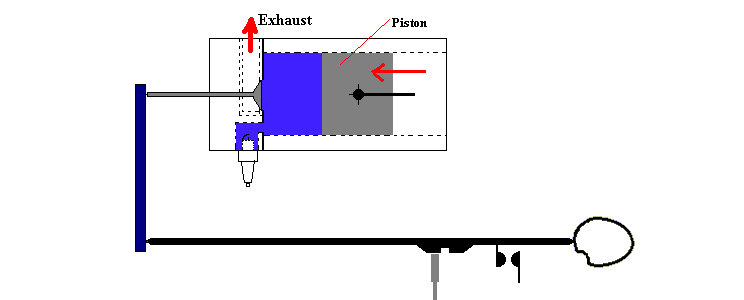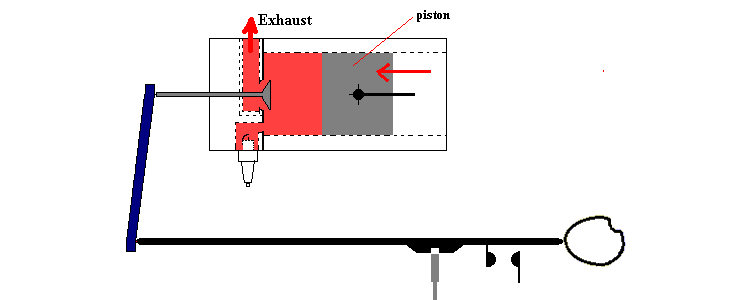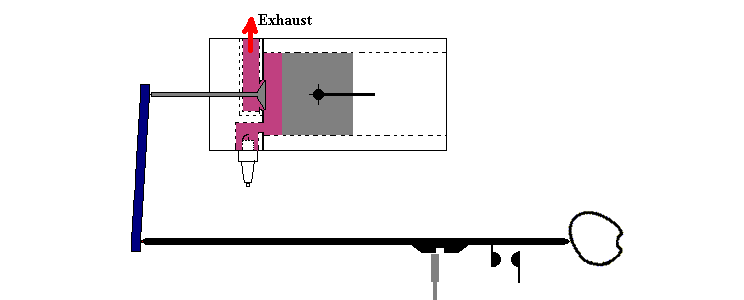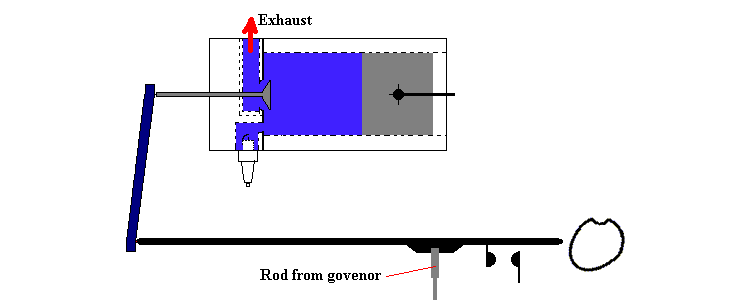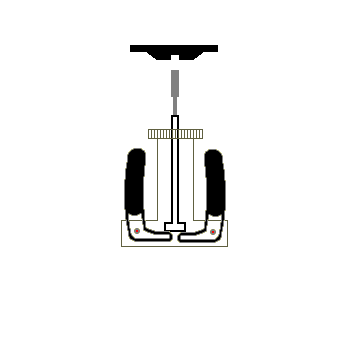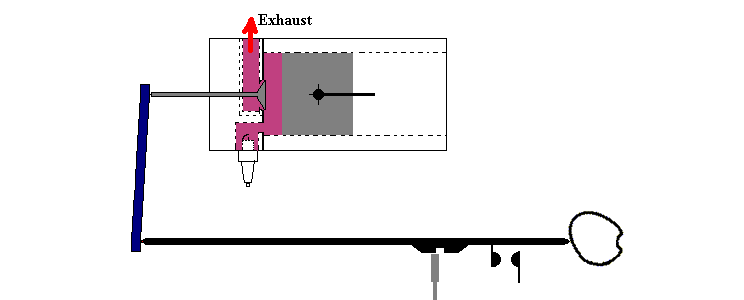Bill 1906
V Twin
Hit and Miss Antique Stationary Gasoline Engines
"Chuggers"
Hit and Miss Opposed to Throttled Explained
"I hope"
| Hit and Miss -
Controls the engines speed by cutting off the engines ignition
system when it runs too fast. This is the "miss" part. When the
engine slows too much, it allows it to "hit" again and pick
speed back up.
Throttle Governed - Controls the engine speed by controlling a butterfly in the carb. If it runs too slow, it opens the butterfly and a larger charge of air and fuel is allowed into the engine and it runs faster. If the engine runs too fast, it closes the butterfly and allows a smaller charge of air and fuel into the engine and it runs slower. Both types of engines have one thing in common the govenor. So we will start with that. The Govenor Below in Fig. 1 is an animation of a typical govenor in
action. As the engine speed increases, the weights on the
govenor fly outward because of centrifugal force. This action in
turn pushes the rod in the middle outward. As the engine slows
they are forced inward by a set of springs (springs not shown).
You can now use this action of the rod moving outward (going too fast) and inward (slowing down) to control the engine. The oldest of the two types of engines is the "Hit and Miss" but we will start with the easiest to explain first or the "throttled goverened" engine. Throttle Governed Engine Below in Fig. 2, you will see a govenor hooked onto a mixer or commonly known as a carburetor. As the engine increases in speed, the butterfly in the mixer is closed thereby reducing the amount of fuel the engine gets. Less fuel, the slower the engine runs at. if the speed becomes too low, the govenor moves the butterfly more open which increases the amount of fuel and the engine speeds up.
The "Hit and Miss" Engine The older of the two types is the Hit and Miss gas engine. It is also less regulated than the throttle type. There are two different states the engine can be in, "Hit" or "Miss". First we will look at the "Hit" state. This is really the
same as the throttled engine except each time the engine intakes
the gas it takes a full charge. There is no butterfly in a hit
and miss mixer. So the engine wants to go faster and faster.
Here are the Four cycles (4 strokes) of the "Hit" state.
Refer to fig.3 below. This is the intake cycle where the piston is moving to the right or away from the head. As it does, it creates a vacuum in the cylinder and that pulls the air and fuel into the cylinder. The intake valve is not shown here, and is just on a spring to keep it in the closed position. As the vacuum increases it pulls the intake valve open and the air/fuel mix enters. Intake Cycle Notice the contacts that are hooked to a "buzz" coil to
create the spark later. Also the rod from the govenor is down
because the engine is running slow . See Fig. 9 below for a view
of how the rod and govenor works on this setup. As for now, the
govenor is not in play . Refer to fig.4 below. This is the compression cycle. All valves close and the piston moves to the left or towards the head. As it does, the mixture compresses making it very volatile. Compression Cycle Fig. 5 below shows the the contacts to the "buzz" coil closed and that fires the spark plug pushing the piston to the right or away from the head. Notice in the fire cycle, the cam allows the exhaust rod to dip backwards, allowing the contacts to close and fire the spark plug. Fire Cycle Fig. 6 below shows the exhaust valve opening and the piston pushing out the exhaust Exhaust Cycle As the piston reaches the to, the engine starts the cycles
all over beginning at the intake cycle (Fig.3) above. In Fig. 7 below you will see the entire operation animated. Notice in the fire cycle, the cam allows the exhaust rod to dip backwards, allowing the contacts to close and fire the spark plug. Anamated Four Cycles ("Hit" State)
So how do we "govern" the engine? Govenor in locked posision ("Miss" State)
Refer to Fig. 8 above and Fig. 9 below. As the govenor runs too fast it pushes the govenor rod into the exhaust push rod and traps it (see Fig. 9 below). This allows the exhaust valve to stay open all the time. No vacuume is made by the piston so no fuel can enter into the cylinder. Also the contact going to the "buzz" coil will not close, so the spark plug never fires. The engine just "free wheels" or coasts. Finally is slows too much and the govenor removes it's rod and the entire engine returns to the "Hit" state.
Below in Fig. 10 you will see two four stroke cycle in the "Hit" state then two four stroke cycles in the "Miss" state. Here is a hint as to which state it is in. If the exhaust valve isn't moving at all, it's because it is in the "Miss" state or slowing down. Animated Two "Hit" Cycles and Two "Miss"
Cycles |

